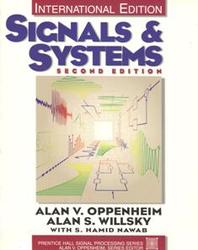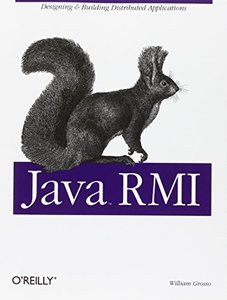買這商品的人也買了...
-
 Signals & Systems, 2/e (IE-Paperback)
Signals & Systems, 2/e (IE-Paperback)$1,250$1,225 -
 Fundamentals of Data Structures in C
Fundamentals of Data Structures in C$1,050$1,029 -
 The C Programming Language, 2/e (IE-Paprback)
The C Programming Language, 2/e (IE-Paprback)$640$627 -
 Data Mining: Concepts and Techniques
Data Mining: Concepts and Techniques$2,510$2,385 -
 SQL Server 2000 資料庫設計與系統管理
SQL Server 2000 資料庫設計與系統管理$650$514 -
 Operating System Concepts, 6/e
Operating System Concepts, 6/e$1,050$1,029 -
 C++ Primer, 3/e 中文版
C++ Primer, 3/e 中文版$980$774 -
 Introduction to Algorithms, 2/e (Hardcover)
Introduction to Algorithms, 2/e (Hardcover)$990$970 -
 Professional ADO.NET
Professional ADO.NET$1,820$1,729 -
 802.11 Wireless Networks: The Definitive Guide
802.11 Wireless Networks: The Definitive Guide$1,640$1,558 -
 LPI Linux 資格檢定 (LPI Linux Certification in a Nutshell)
LPI Linux 資格檢定 (LPI Linux Certification in a Nutshell)$880$695 -
 Computer Architecture: A Quantitative Approach, 3/e(精裝本)
Computer Architecture: A Quantitative Approach, 3/e(精裝本)$1,300$1,274 -
 Sun Certified Programmer & Developer for Java 2 Study Guide, 2/e
Sun Certified Programmer & Developer for Java 2 Study Guide, 2/e$1,820$1,729 -
 作業系統概念 (Operating System Concepts, 6/e Windows XP Update)
作業系統概念 (Operating System Concepts, 6/e Windows XP Update)$780$741 -
 ASP.NET 程式設計徹底研究
ASP.NET 程式設計徹底研究$590$466 -
 $1,260CCNA Certification Library (CCNA Self-Study, exam #640-801), 6/e
$1,260CCNA Certification Library (CCNA Self-Study, exam #640-801), 6/e -
 $399CCNA ICND Exam Certification Guide (CCNA Self-Study, 640-811, 640-801) (Hardcover)
$399CCNA ICND Exam Certification Guide (CCNA Self-Study, 640-811, 640-801) (Hardcover) -
 鳥哥的 Linux 私房菜-伺服器架設篇
鳥哥的 Linux 私房菜-伺服器架設篇$750$638 -
 鳥哥的 Linux 私房菜─基礎學習篇增訂版
鳥哥的 Linux 私房菜─基礎學習篇增訂版$560$476 -
 CCNA Self-Study: Interconnecting Cisco Network Devices (ICND) 640-811, 640-801, 2/e
CCNA Self-Study: Interconnecting Cisco Network Devices (ICND) 640-811, 640-801, 2/e$2,250$2,138 -
 Dreamweaver MX 2004 魔法書中文版
Dreamweaver MX 2004 魔法書中文版$490$417 -
 人月神話:軟體專案管理之道 (20 週年紀念版)(The Mythical Man-Month: Essays on Software Engineering, Anniversary Edition, 2/e)
人月神話:軟體專案管理之道 (20 週年紀念版)(The Mythical Man-Month: Essays on Software Engineering, Anniversary Edition, 2/e)$480$379 -
 JSP 2.0 技術手冊
JSP 2.0 技術手冊$750$593 -
 CCNA 認證教戰手冊 Exam 640-801 (CCNA Cisco Certified Network Associate Study Guide, 4/e)
CCNA 認證教戰手冊 Exam 640-801 (CCNA Cisco Certified Network Associate Study Guide, 4/e)$780$663 -
 $675LPIC 1 Exam Cram 2: Linux Professional Institute Certification Exams 101 and 102 (Paperback)
$675LPIC 1 Exam Cram 2: Linux Professional Institute Certification Exams 101 and 102 (Paperback)
相關主題
商品描述
Java RMI contains a wealth of experience in designing and
implementing Java's Remote Method Invocation. If you're a novice reader, you
will quickly be brought up to speed on why RMI is such a powerful yet easy to
use tool for distributed programming, while experts can gain valuable experience
for constructing their own enterprise and distributed systems.
With
Java RMI, you'll learn tips and tricks for making your RMI code excel.
The book also provides strategies for working with serialization, threading, the
RMI registry, sockets and socket factories, activation, dynamic class
downloading, HTTP tunneling, distributed garbage collection, JNDI, and CORBA. In
short, a treasure trove of valuable RMI knowledge packed into one book.
Table of Contents
Preface
Part I. Designing and Building: The Basics of RMI Applications
1. Streams
The Core Classes
Viewing a File
Layering Streams
Readers and Writers2. Sockets
Internet Definitions
Sockets
ServerSockets
Customizing Socket Behavior
Special-Purpose Sockets
Using SSL3. A Socket-Based Printer Server
A Network-Based Printer
The Basic Objects
The Protocol
The Application Itself
Evolving the Application4. The Same Server, Written Using RMI
The Basic Structure of RMI
The Architecture Diagram Revisited
Implementing the Basic Objects
The Rest of the Server
The Client Application
Summary5. Introducing the Bank Example
The Bank Example
Sketching a Rough Architecture
The Basic Use Case
Additional Design Decisions
A Distributed Architecture for the Bank Example
Problems That Arise in Distributed Applications6. Deciding on the Remote Server
A Little Bit of Bias
Important Questions When Thinking About Servers
Should We Implement Bank or Account?7. Designing the Remote Interface
Important Questions When Designing Remote Interfaces
Building the Data Objects
Accounting for Partial Failure8. Implementing the Bank Server
The Structure of a Server
Implementing the Server
Generating Stubs and Skeletons9. The Rest of the Application
The Need for Launch Code
Our Actual Launch Code
Build Test Applications
Build the Client Application
Deploying the ApplicationPart II. Drilling Down: Scalability
10. Serialization
The Need for Serialization
Using Serialization
How to Make a Class Serializable
The Serialization Algorithm
Versioning Classes
Performance Issues
The Externalizable Interface11. Threads
More Than One Client
Basic Terminology
Threading Concepts
Support for Threads in Java
Deadlock
Threading and RMI12. Implementing Threading
The Basic Task
Guidelines for Threading
Pools: An Extended Example
Some Final Words on Threading13. Testing a Distributed Application
Testing the Bank Application14. The RMI Registry
Why Use a Naming Service?
The RMI Registry
The RMI Registry Is an RMI Server
Examining the Registry
Limitations of the RMI Registry
Security Issues15. Naming Services
Basic Design, Terminology, and Requirements
Requirements for Our Naming Service
Federation and Threading
The Context Interface
The Value Objects
ContextImpl
Switching Between Naming Services
The Java Naming and Directory Interface (JNDI)16. The RMI Runtime
Reviewing the Mechanics of a Remote Method Call
Distributed Garbage Collection
RMI's Logging Facilities
Other JVM Parameters17. Factories and the Activation Framework
Resource Management
Factories
Implementing a Generic Factory
A Better Factory
Persistence and the Server Lifecycle
Activation
A Final Word About FactoriesPart III. Advanced Topics
18. Using Custom Sockets
Custom Socket Factories
Incorporating a Custom Socket into an Application19. Dynamic Classloading
Deploying Can Be Difficult
Classloaders
How Dynamic Classloading Works
The Class Server
Using Dynamic Classloading in an Application20. Security Policies
A Different Kind of Security Problem
Permissions
Security Managers
Setting Up a Security Policy21. Multithreaded Clients
Different Types of Remote Methods
Handling Printer-Type Methods
Handling Report-Type Methods
Generalizing from These Examples22. HTTP Tunneling
Firewalls
CGI and Dynamic Content
HTTP Tunneling
A Servlet Implementation of HTTP Tunneling
Modifying the Tunneling Mechanism
The Bank via HTTP Tunneling
Drawbacks of HTTP Tunneling
Disabling HTTP Tunneling23. RMI, CORBA, and RMI/IIOP
How CORBA Works
The Bank Example in CORBA
A Quick Comparison of CORBA and RMI
RMI on Top of CORBA
Converting the Bank Example to RMI/IIOPIndex
商品描述(中文翻譯)
《Java RMI》包含了設計和實現 Java 遠端方法調用的豐富經驗。如果您是初學者,您將迅速了解為什麼 RMI 是一個強大且易於使用的分散式編程工具,而專家則可以獲得構建自己企業和分散式系統的寶貴經驗。
在《Java RMI》中,您將學習使您的 RMI 代碼出色的技巧和竅門。這本書還提供了有關序列化、執行緒、RMI 註冊表、套接字和套接字工廠、激活、動態類加載、HTTP 隧道、分散式垃圾回收、JNDI 和 CORBA 的工作策略。簡而言之,這是一本包含大量有價值的 RMI 知識的寶藏書籍。
目錄
前言
第一部分:設計與構建:RMI 應用的基本知識
1. 流
核心類
查看文件
層疊流
讀取器和寫入器
2. 套接字
網際網路定義
套接字
伺服器套接字
自定義套接字行為
特殊用途套接字
使用 SSL
3. 基於套接字的印表機伺服器
基於網路的印表機
基本物件
協議
應用本身
演進應用
4. 使用 RMI 寫的相同伺服器
RMI 的基本結構
重新檢視架構圖
實現基本物件
伺服器的其餘部分
客戶端應用
總結
5. 介紹銀行範例
銀行範例
草擬粗略架構
基本用例
額外設計決策
銀行範例的分散式架構
分散式應用中出現的問題
6. 決定遠端伺服器
一點偏見
思考伺服器時的重要問題
我們應該實現銀行還是帳戶?
7. 設計遠端介面
設計遠端介面時的重要問題
建立數據物件
考慮部分失敗
8. 實現銀行伺服器
伺服器的結構
實現伺服器
生成存根和骨架
9. 應用的其餘部分
啟動代碼的需求
我們的實際啟動代碼
構建測試應用
構建客戶端應用
部署應用
第二部分:深入探討:可擴展性
10. 序列化
序列化的需求
使用序列化
如何使類可序列化
序列化算法
類的版本控制
性能問題
Externalizable 介面
11. 執行緒
多於一個客戶端
基本術語
執行緒概念
Java 中的執行緒支持
死鎖
執行緒與 RMI
12. 實現執行緒
基本任務
執行緒的指導方針
池:擴展範例
關於執行緒的一些最後話語
13. 測試分散式應用
測試銀行應用
14. RMI 註冊表
為什麼使用命名服務?
RMI 註冊表
RMI 註冊表是一個 RMI 伺服器
檢查註冊表
RMI 註冊表的限制
安全問題
15. 命名服務
基本設計、術語和需求
我們的命名服務需求
聯合和執行緒
上下文介面
值物件
ContextImpl
在命名服務之間切換
Java 命名和目錄介面 (JNDI)
16. RMI 執行時
回顧遠端方法調用的機制
分散式垃圾回收
RMI 的日誌功能
其他 JVM 參數
17. 工廠與激活框架
資源管理
工廠
實現通用工廠
更好的工廠
持久性與伺服器生命週期
激活
關於工廠的最後話語
第三部分:進階主題
18. 使用自定義套接字
自定義套接字工廠
將自定義套接字納入應用
19. 動態類加載
部署可能很困難
類加載器
動態類加載的工作原理
類伺服器
在應用中使用動態類加載
20. 安全政策
一種不同類型的安全問題
權限
安全管理器
設置安全政策
21. 多執行緒客戶端
不同類型的遠端方法
處理印表機類型的方法
處理報告類型的方法
從這些範例中概括
22. HTTP 隧道
防火牆
CGI 和動態內容
HTTP 隧道
HTTP 隧道的 Servlet 實現
修改隧道機制
通過 HTTP 隧道的銀行
HTTP 隧道的缺點
禁用 HTTP 隧道
23. RMI、CORBA 和 RMI/IIOP
CORBA 的工作原理
CORBA 中的銀行範例
CORBA 和 RMI 的快速比較
RMI 在 CORBA 之上
將銀行範例轉換為 RMI/IIOP
索引












